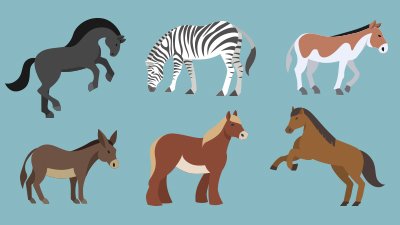Examining Elephant Tusk "Evolution"
Environmental News Network: “Elephants Evolve Smaller Tusks Due to Poaching” One story this week takes a close look at an examples of “evolution” in nature. But is there anything that can’t be explained through the biblical model of origins?
The article reports on a recent study of elephant tusk length, which discovered that the average size of tusks for both Indian (Asian) and African elephants has declined significantly in the last 150 years. Researchers speculate that the poaching of large-tusked elephants is to blame for the decline. So is this evolution?
Mutations can provide variety in the genetic makeup that is selected for or against.
Diligent readers already know where we’re headed with this. For a start, it’s important to clarify that “evolution,” as a general term, is roughly a synonym for change. In biological contexts, it specifically refers to changes in genotypic and phenotypic frequencies in a population over time. By this broad definition, everything from the average tusk length of an elephant population declining slightly to an amoeba morphing into a human can be called evolution.
We submit that there is a substantial difference between these two examples, however. Some have referred to this distinction as between horizontal evolution (change within kinds) and vertical evolution (change between kinds). The former involves selective pressures (natural, sexual, or even artificial) eliminating certain members of a population, effectively changing the population’s overall makeup. For example, if poachers kill all long-tusked elephants, leaving only the short-tusked ones, the population’s characteristics have changed—they have evolved (using the definition above as change over time). Mutations can provide variety in the genetic makeup that is selected for or against. For instance, on a windy island, flying beetles may be blown into the ocean easily. A normally debilitating mutation that incapacitates this flight ability would allow such flightless beetles to avoid being blown in the ocean, thus living longer and reproducing more often.
The question is, could such “evolution,” if allowed to proceed for millions of years, ever reshape a unicellular organism all the way up to a human being? The answer is no, because mutations and natural selection do not add new information to the genome. Without this, there would be no way for the amoeba genome to gain the necessary information, over time, to “build” a human. Believing such a story, then, requires great faith and a starting point other than the Bible. An elephant population’s average tusk length varying because of poaching requires no change in genetic information; essentially, it just means that elephants whose genes say “make tusk length 10” are selected against, whereas those whose genes say “make tusk length 5” (for example) are selected for.
For more information
Remember, if you see a news story that might merit some attention, let us know about it! (Note: if the story originates from the Associated Press, Fox News, MSNBC, the New York Times, or another major national media outlet, we will most likely have already heard about it.) And thanks to all of our readers who have submitted great news tips to us.
(Please note that links will take you directly to the source. Answers in Genesis is not responsible for content on the websites to which we refer. For more information, please see our Privacy Policy.)
Recommended Resources

Answers in Genesis is an apologetics ministry, dedicated to helping Christians defend their faith and proclaim the good news of Jesus Christ.
- Customer Service 800.778.3390
- © 2024 Answers in Genesis






